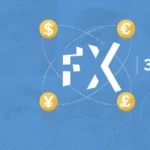The foreign exchange market and its participants
We have already seen what the foreign exchange market is and how it works, as well as different exchange rate systems. Here, we will analyze the broad range of participants that engage in a market that, in average, churns around 5 trillion dollars on a daily basis.

As we mentioned in the first installment of this series on the foreign exchange market, one of its defining features is the broad variety of participants that engage in it, from central banks to individuals. These are the main groups:
- Commercial banks and investment banks; which generally act on their own behalf or based on the needs and interests of their clients.
- Brokers; who act as intermediaries between financial institutions or as links with private individuals, in exchange for a fee.
- Central banks and supranational entities (BIS - Bank for International Settlements, IMF - International Monetary Fund, EIB - European Investment Bank); central banks are responsible for issuing their respective country's currency and managing and controlling the money supply. Central Banks therefore intervene in currency markets - individually or in a coordinated way – to keep the value of their currencies within the limits defined by their monetary policies in pursuance of explicit commitments (such as in the case of fixed exchange rates) or otherwise, using their foreign currency reserves. Supranational entities, have mandates in supervisory, market analysis, investment aid, etc.
- Sovereign funds (Norway-Government Pension Fund, China Investment Corporation, ADIA-Abu Dhabi Investment Authority, etc ...); public investment funds that invest proceeds from business privatizations, natural resources (oil, gas), etc... in foreign currency assets.
- Funds and investment entities; which intervene in foreign exchange markets with speculative purposes or to obtain returns.
- Non-financial entities, including companies (multinationals, large corporations and SMEs) or institutional investors (such as insurance companies or asset managers) that engage in exchange markets for commercial or investment purposes.
- Individuals; who operate in the foreign exchange market for transactional or speculative purposes.
Depending on the different agents that intervene in foreign exchange transactions, their purpose can be classified as follows:
- Payment settlements; in connection with export and import transactions.
- Hedging; aimed at preventing impacts in the income statement, costs, valuation of assets and liabilities, etc ... caused by changes in the price of one currency versus another.
- Speculation; aimed at earning returns on or profiting from market price oscillations.
- Intermediation; aimed at helping buyer and seller interests meet, in exchange for a fee (Brokers).
- Intervention; generally by central banks, individually or in coordination with other central banks, seeking to influence their currency.
- Arbitration; to take advantage of market inefficiencies to earn a risk-free profit.